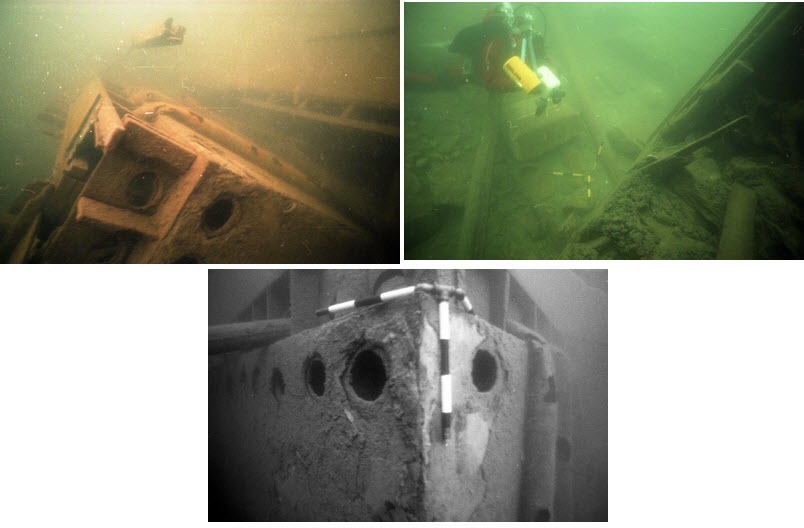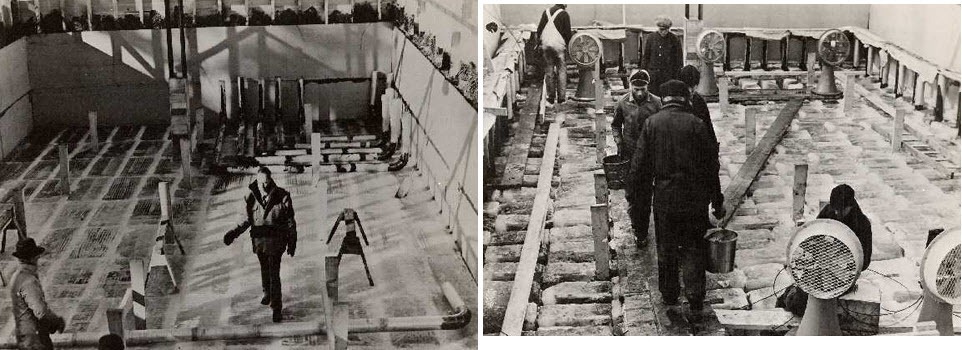One of them was steel.
In the North Atlantic, the British fleets were taking a pounding against the German U-boats.
What was needed was a way for aircraft to land and refuel without overtaxing already strained resources.
An artist’s conception of Project Habakkuk.
Its torpedo-proof hull would be 40 feet thick.
It was to be equipped with 40 dual-barreled turrets and numerous light anti-aircraft guns.
The airstrip could accommodate up to 150 twin-engine bombers or fighters planes.
There was one major problem: ice melts, but Geoffrey Pyke had a solution for that too.
Soon a 60-foot long, 1,000-ton prototype was built on Patricia Lake in the Canadian Rockies.
A one horsepower refrigeration system kept the ship sufficiently cool to last all through the summer months.
During tests, some new problems arose.
Although ice is hard, it is brittle.
Experiments showed that this new material was highly resistant to compression, chipping, and even bullets.
This wonder material was named pykrete, in honor of Pyke.
He then turned his gun to the pykrete and fired.
The bullet grazed the trouser leg of Admiral Ernest King, and ended up in the wall.
The miraculous material was exactly what Geoffrey Pyke needed for the success of Project Habakkuk.
Designs and plans for construction of the aircraft carrier were rushed ahead.
The original cost was pegged at 700,000.
Steering also raised some problems.
But the biggest problem was raw material itself.

Building the prototype on Patricia Lake, Canada.
The wreck of the iceberg-ship under Patricia Lake.
Photo credit:divermag.com
Sources:Wikipedia/Interesting Thing of the Day/www.goodeveca.net/Gizmodo/Untested Arms





